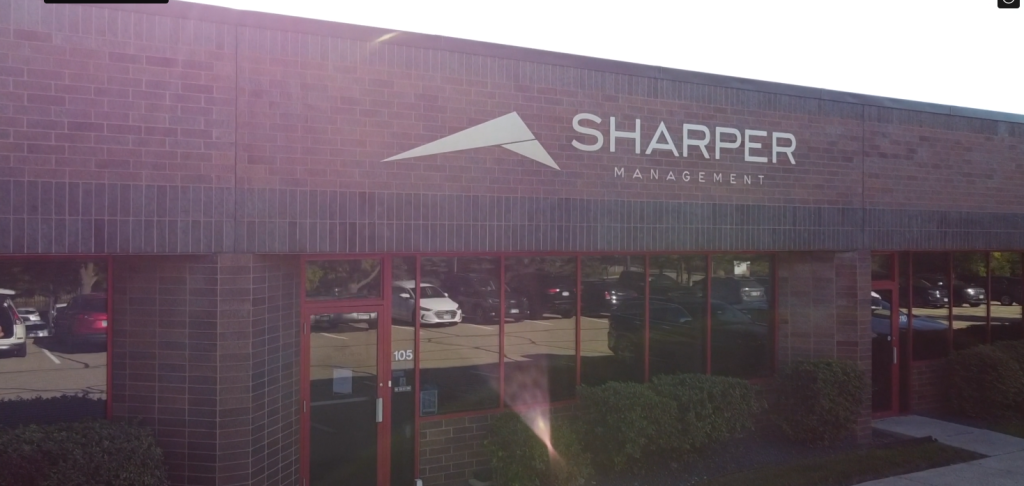Rental Management Program

Tracking rental properties within an Association has long been a challenge to both Management and to the Board. “Managing” those Owners that choose to rent by ensuring they abide by any policies the Association might have regarding renting is even harder. It goes beyond the scope of the Management Agreement, and certainly adds further burden to the volunteer Board member experience. Recognizing this issue, Sharper has rolled out a program that adds the necessary resources to help manage this task, while allocating the cost to those creating it (the Owners that rent). This program is in the form of an Addendum to the Management Agreement. If adopted, it engages our rental management staff and gives the following benefits to the Association. Sharper Management will: · Track all rental properties and their Lease terms · Keep file of all Tenant contact information · Ensure all required paperwork is on file (ex: copy of Lease, Addendum, etc.) · Verify compliance with any City requirements (ex: rental license) The costs associated with engaging in this program is charge to the Owners that rent on an annual basis. As a Board, you have the authority to establish fees – and this minor Owner fee creates an opportunity to better manage the rentals in your community. Speak to your Manager or contact Client Care for more information. clientcare@sharpermanagement.com
Board Tips: Make Your Meetings Matter

There’s no denying that we live in a culture of meetings. The ease and accessibility of virtual meetings have furthered exasperated the reactionary notion of “let’s get together to talk it through.” As we approach the spring/summer season and the cadence of Board meetings increase, step back and consider two things – Frequency and Productivity. Meeting Frequency – how often are you meeting as an association Board? This will certainly vary. Your Governing Documents may dictate a number of meetings to be held within a calendar year. The size and complexity of your community may require more or less meeting regularity. And situational issues or projects may dictate the volume necessity for a “meeting of the minds.” Consider the notion, however, that the more often you meet, the less productive you may be. Fewer meetings force focus – and therefore motivation to have tangible outcomes and measurable initiatives. Consider evaluating your meeting productivity. If you find that decisions are often times delayed or tabled, if your meetings are more social than business, and certainly if you have a limited number of items on your docket, consider having fewer meetings. See how it goes. The results might surprise you! Productivity = Action List – to ensure that the meeting was, in fact, constructive with measurable outcomes, it is helpful to have a summary identifying assigned tasks. Make a list! As Managers, we refer to this as an “Action Item List.” These can even be incorporated into the Meeting Minutes if it reflects a New Business decision or resolution of the Board. Towards the end of a meeting, it is natural for people to just want to get home. Verbally summarizing and capturing, in writing, all action items is imperative. To make your meetings matter, reconsider frequency and have measurables/outcomes. You’ll find the two go hand-in-hand!
A Look Ahead to 2024 & Back at 2023

2023 has been another great year for Sharper Management! To name just a few successes— Continued growth in welcoming 31-new clients. In doing so, we passed a milestone of 200 associations managed. We also continue a strong retention rate of existing clients. We opened a satellite office in Maple Grove. This summer we rolled out significant upgrades to our software platform and web portal offering – perhaps most notably, a wonderful architectural request tracking and approving feature. This winter we will be integrating new software to help streamline the scheduling and management of our maintenance team. We continue our passion for training. We offered four sessions attended by nearly 200 Board members, representing over 60 different associations This spring we also rolled out our Educational Video Library, featuring 90 videos on dozens of different topics. We had another successful Sharper Scramble Golf Tournament and for the first time ever we topped $10,000 in proceeds, which were donated to the Multiple Myeloma Research Foundation. Sharper was also a feature of our industry’s trade organization (Community Association Institute) annual Vision Awards – receiving nine nominations. See Vision Awards article for details. The achievements of 2023 are many. What we continue to be most proud of, however, is the cohesion and growth of our talented team. We welcomed five new managers this year, each of them a seasoned veteran, uniquely talented, with years of industry experience. We also added positions in our Accounting, Maintenance and Client Care departments. And in an industry plagued by retention issues, we continue to excel in our staff retention. As we look to 2024, we have lots of exciting things on the horizon. See the 2024 Event Calendar article below. We look forward to sharing updates with you through these quarterly newsletters. All of us at Sharper would like to thank you for being a valued client. We thank you for being a part of a great 2023 and look forward to an exciting 2024. And, finally, we wish you and your family a safe, healthy and happy Holiday Season! Legislative Changes Effecting HOAs The 2023 legislative session in Minnesota was an active one. There were a number of significant bills that will, and have, impacted community associations in the state. Some legislative items went into effect this year. See our July newsletter for a detailed listing. As we approach 2024, there is one significant bill that effects some standard day-to-day operations and governance of your association. Violations & Rule Enforcement – in effort to create more uniformity in how rule violations are notified, fines assessed and appeals processed, the Minnesota Common Interest Ownership Act (MCIOA) was amended to create further standards. What it Says – any fine associated with a rule violation has to meet seven specific criteria or it could be challenged in a court. Homeowners are also entitled to a more consistent processes for an appeal and hearing of said fine. Who it Affects – all associations that are currently under MCIOA, which is any association built after June 1, 1994 – and any condominium association regardless of when it was established. What it Means – Any fine and certain assessments must be accompanied by a dated, written notice to the Owner that includes seven specific pieces of information. (1) states the amount and reason for the fine or assessment (2) for fines levied under section 515B.3-102(a)(11) [VIOLATION OF GOVERNING DOCUMENTS], specifies: (i) the violation for which a fine is being levied and the date of the levy; and (ii) the specific section of the declaration, bylaws, rules, or regulations allegedly violated; (3) for assessments levied under section 515B.3-115(g) or 515B.3-1151(g) [DAMAGE TO COMMON ELEMENTS OR A UNIT], identifies: (i) the damage caused; and (ii) the act or omission alleged to have caused the damage; (4) states that all unpaid fines and assessments are liens which, if not satisfied, could lead to foreclosure of the lien against the owner’s unit; (5) describes the unit owner’s right to be heard by the board or a committee appointed by the board; (6) states that if the assessment, fine, late fees, and other allowable charges are not paid, the amount may increase as a result of the imposition of attorney fees and other collection costs; and (7) informs the unit owner that homeownership assistance is available from the Minnesota Homeownership Center When it Goes into Effect – January 1, 2024
Sharper Dominates at Industry Gala & Award Ceremony

For the second consecutive year, Sharper had a huge night at the annual Community Association Institute (CAI) Holiday Gala and Vision Awards ceremony. CAI, the international trade organization for community associations and regarded as the national experts in education programs, publications, association governance, and advocacy, and the accreditation body holds this annual event to recognize and celebrate managers, business partners, and homeowner leaders. This year the event was held on December 1st and was attended by nearly 500 industry professionals. Multiple awards were given out to both associations and individual managers. Nominations are submitted by CAI members, and a special voting committee reviews all nomination applications for specific criteria. The awards are a high honor and significant recognition by industry experts for industry professionals. Sharper had nominations for all ten award categories, and we took home half of them for the second year! Please join us in congratulating the following award winners: Above & Beyond – Michelle Waldroff. This award recognizes an individual for substantive achievement in performing tasks and services beyond the typical job description and scope of responsibilities. Financial Impact – Matthew Vitek. This award recognizes a manager who positively impacted a community(s) in a significant manner, such as budget management, capital improvement project management, insurance claim navigation, etc. Advanced Manager of the Year – Melissa Cushing. This award recognizes a manager with over 7 years of experience that excelled in all aspects of community association management functions. Outstanding Community – 1666 Coffman (Manager Lorie Mestas). This award recognizes an association that values community building. CAI Volunteer of the Year – Natalie Martynow. This award is selected by the CAI-MN Board of Directors and recognizes a member that generously volunteers a significant amount of time and contributes their talents to ensure the Chapter’s success. Among the other 90+ nominations submitted this year, congratulations to Sharper’s finalists and runner-ups, which include: Lorie Mestas for Excellent in Service; Jeremy Schulz for Rookie of the Year; Tracy Shaver for Intermediate Manager of the Year; and Association of the Year nominees Ridgewood Condominium Association and The Henley Condominium Association. What a beautiful night for the industry and for Sharper Management!
Board Tip: Tabling vs. Postponing Agenda Items

While each HOA may conduct business differently, a standard procedure for board meetings is essential to optimize efficiency and productivity, commonly known as Parliamentary Procedure. Some boards use Robert’s Rules of Order to create the meeting format, agendas, motions, and floor discussion, while others create their own procedures. But, even with a solid structure to a meeting, certain topics will have heavier debate than others. Whether members don’t have enough information on the topic, or it’s too sensitive, the board will either “table” or “postpone” that item. Postpone If the board decides that the item is taking up too much time, or the members’ time would better be spent on something else, they can decide to postpone the matter. With this structure, the board intends to take the matter back up at a later time, whether in the same meeting or a future one. These items can be postponed to a definite time. The motion to postpone can be debated by members. There are, however, indefinite postponements, where the board has no particular intention of taking the matter back up. If an item is postponed indefinitely, the matter cannot be brought up in the same meeting. Table Following Robert’s Rules of Order, a motion to lay an item “on the table” takes precedence over all other motions at the time that it is made. This motion cannot be debated and needs a majority and a second to carry the motion. However, with laying an item on the table, that matter doesn’t automatically come up in the next meeting. There has to be a motion to take that topic off the table. And, the motion to take the matter off the table can only be done during certain classes of business, such as “unfinished business” or “general orders.” This motion also needs a second and a majority. As your Minnesota neighbors, Sharper Management works to keep your HOA board of directors informed to ensure efficient leadership.
The Benefits of Spring Cleaning

With all of us being at home for the time-being, this might be your year to do a deep-down spring clean. There are a lot of surprise benefits to spring cleaning! It helps alleviate allergy and asthma symptoms. Cleaning up pollutants like dust, pet dander, dirt, mildew, mold, and more will improve your air quality and help out any residents who have allergies. Dust all of your hard surfaces, vacuum your carpet (especially under the furniture), sanitize your hard surfaces (bathroom/kitchen especially),and air out rugs/cushions since soft surfaces attract dust. It curbs stress and improves productivity. A cluttered home, especially if you work out of a home office, can negatively affect your focus because of the overstimulation. Buy some organizers if you have a lot of objects without a place to store and get to work on decluttering. Try turning on some music while cleaning to help boost your endorphin levels. Music and the result of a clean space has been proven to make people happier. Make a pile for the things you no longer need, but are in good condition. The items will all set to move out to a donation center when they open again. A deep clean of your entire home might also alert you to any damages or things that need to be maintained. It’s always better to stay on top of those issues so that they don’t get any worse. Get a “fresh” start on 2020 by improving your mental and physical health with a good clean. If tackling the whole space at once seems too daunting, then take it one room at a time. Your home is your oasis, and it’s important to take care of it.
So, What Goes in Meeting Minutes, Anyways?

Ok… time to elect Officers! Who wants to be Secretary???……Anyone?……Hello?…. No one wants to be Secretary because most people find the role of taking Meeting Minutes to be a daunting task. If you refocus your view of what Minutes are supposed to be, however, it really isn’t a tall task at all. Minutes should document decisions made. They are not meant to be a dictation of everything that was said at the meeting. In fact, it is highly recommended that Minutes do NOT capture, in detail, general ideas discussed. It can lead to very creative interpretations by readers! Minutes should be short and concise. Bullet points are your friend. They should follow (and may be in the format of) your Agenda. Here are the essential points your Minutes should capture: Correct legal name of the Association Type of Meeting Board Members in attendance and absent Date, location and time meeting was called to order and adjourned. Names of homeowners formally addressing the Board (example: those requesting, in advance, to be on the Agenda) A generalized listing of topics discussed (short bullet points recommended) A detailed statement of motions and resolutions proposed. Names do not need to be identified for “Yes” and “No” votes. The vote count, however, should be shown. Example: “Johnson moved to approve the Minutes from the June 15th meeting. Bartlett seconded. Minutes were approved unanimously.” Finally, the date, time and location of the next meeting. Again, the purpose of Minutes is to document decisions made and provide a listing of topics discussed. Remember, Minutes can actually be used as a legal document and are the official record of your Association. Keep them concise and they will serve you well….and perhaps it won’t be so hard to get an answer to question “so…..who wants to be Secretary!?”
Don’t Break Your Own Rules in Rule Enforcement

Spring is here and that means Community Managers and Board members will be active in walk-arounds/site inspections while hoping to whip the association back in to shape after a long winter’s nap. Rule violations are always a focus in these efforts. Melted snow un-earths pet damage to turf; holiday lights still adorn balconies; neglected exterior maintenance items that homeowners may be responsible for become apparent; “big-boy toys” like boats and RVs begin to come out and park in driveways and guest parking; kid toys and sports equipment litter patios and common areas; and on and on. While associations should be assertive and fair in cleaning up these and other rule violations, there is one area that Boards can get themselves in trouble when it comes to enforcement – adhering to their own appeal opportunities and hearing processes. Many Declarations documents give some parameters and rights to members/homeowners when it comes to compliance and remedies in regard to rule enforcement. It is always wise to not only have a thorough Enforcement Policy (warning, first fine, second fine, etc), but also an appeal and hearing procedure as part of the Rules & Regulations document. This policy should mirror or further enhance -but never contradict – any existing language in the Declarations or ByLaws. The most common approach to creating fairness when it comes to rule remedies is to allow for an appeal and hearing procedure. Some rule violations, after all, might have extenuating circumstances, or sometimes the violation might have been applied to the incorrect offender. Allowing for an appeal procedure creates an opportunity to hear this out. This “appeal” should come in way of a “hearing” before the Board. Additionally, the Minnesota Common Interest Ownership Act (“MCIOA”) contemplates this notion when it provides that owners should be able to speak before the Board. A common approach that has been incorporated into more recent governing documents is to allow for a rule offender to be given 10 days to request a hearing before the Board. The Board then has 30 days to schedule said hearing from receipt of a formal request for a hearing (tip: which could and should be at the next scheduled Board meeting). The Board then has a reasonable amount of time to further deliberate the information presented and provide a formal written response to the owner either upholding or altering the rule violation and any corresponding sanctions. The key, however, to making this procedure work, is to be appropriately notify the homeowners of their right to appeal and hearing in all correspondences that related to the rule violation. Many Declarations (and therefore coinciding rules and enforcement policies) do state something along the lines of “the offender shall be given notice of the nature of the rule violation and the right to a hearing…” If any of the rule violation letters, be it the original warning or certainly any subsequent fines, did not state the owner had a right to an appeal and/or hearing, the Association did not follow through on their requirements for enforcement. Should the matter end up in court, a judge might likely side with the homeowner. While no one wants to add administrative steps, particularly with regards to owners breaking rules, it is important to be aware of any appeal and/or hearing procedures that may already be in place – and certainly it is important to be incorporating those requirements in enforcement efforts.
Board Tips: Overcoming Decision Making Paralysis

There is nothing more frustrating for members, managers, and even homeowners than a Board that is collectively stuck in the muck, endlessly spinning their wheels deeper in the rut of indecision. Rest assured, it is a common condition. If it is not a recognized medical disorder, it should be! Perhaps it is a large construction project, a delicate homeowner situation needing resolution, a complicated budget crisis, or maybe a vendor change. Many things are thrown at Boards – and often times it is difficult to get to that point where you are ready for the all-important motion to vote. There are three things that may help you as an individual Board member, and as a collective group. Accept that you will never have 100% satisfaction from stakeholders. Often, time on the Board means time spent making tough decisions that are best for the Association as a whole. Don’t let chronically complaining Cathy dictated construction projects. A needed special assessment can’t be derailed because it will break broke Bob’s bank account. Accept that designer Debbie doesn’t do blue and won’t like those new shutters. The sooner you realize unanimous acceptance is rare, if not impossible, the sooner you can move on to make necessary decisions. Realize that Board consensus can be difficult to achieve and accept that it is OK. The more complicated the topic, the more likely you are to have varying opinions. Naturally, it is good to hash it out. Consider all angles. However, at some point you’ve got to call the vote. Which brings us to our final point. Have a good facilitator among the group. There is nothing more important to group dynamics than for someone to take on the role of task master. Perhaps it is the President acting as the Chairman. Sometimes it is the Community Manager being the neutral party helping facilitate the meeting along. Whomever it may be, a group needs this person! Their primary skill should be recognizing when a debate is over or just plain unproductive, and calling the subject to a vote for resolution. All too often decisions get “tabled” for the next meeting. If it gets “tabled” once – you may as well just move on entirely. You’re probably stuck on the two points mentioned above and will always be there. We’re sure you can now see how these points all work together! Consider these remedies for decision making paralysis and hopefully you can be a more productive Board by making decisions and moving forward with your Association’s projects and initiatives!
Committees, Committees, Committees – Part II

Welcome to Part II of Committees, Committees, Committees. As a Board member, the responsibilities and tasks to keep the association running smooth can add up quickly. And as a leader, the art of delegation is incredibly important. Committees can be a great resource to, and outlet for, the Board of Directors. The goal of this article is to understand the roles and responsibilities of committees, define the types of committees, and to provide some keys to successful utilization of them. Role of a Committee The primary function of a committee is to assist the Board in meeting their many responsibilities. Committees can do this by performing specific tasks (such as the things mentioned above) and performing research. The end goal of the work of a committee is to prepare and make recommendations to the Board. It is imperative to remember that committees (unless governing documents give it with a mandatory committee) are advisory and have no authoritative power. Power in decision making and action remains with the Board. Other benefits include broadening community input and contributions to the Association. Tips for Successful Committees Reminder – committees serve at pleasure of the Board – & are advisory groups Any committee that does have independent authority, should have detailed processes & an appeal process to the Board. Ex: architectural control committee Appoint a Board Liaison Detailed job descriptions which outline roles & responsibilities Keep Minutes Submit official recommendations to Board in writing Motivate & Empower – but Manage Authority Give meaningful tasks Give recommendations serious consideration Give public recognition for performance Committee meetings should be open to members
